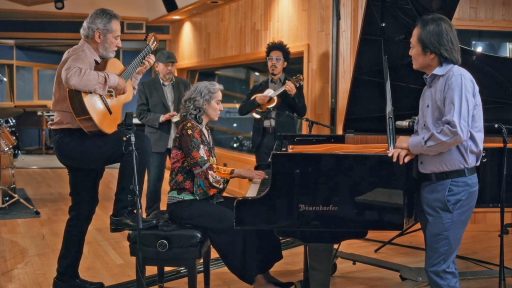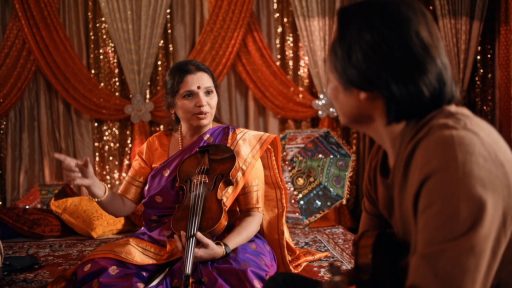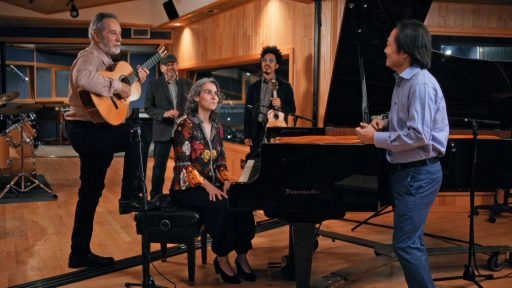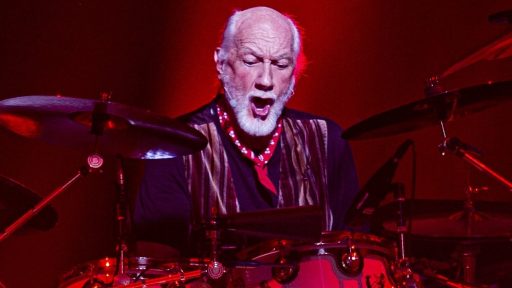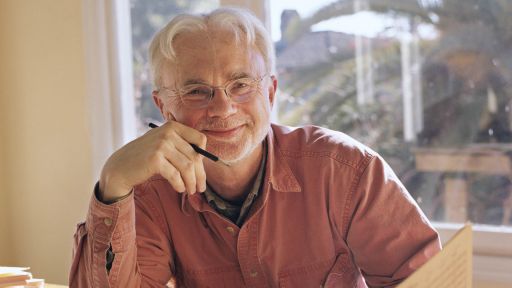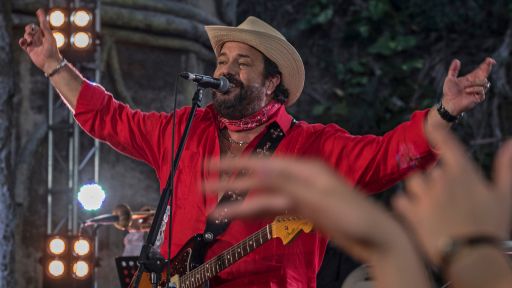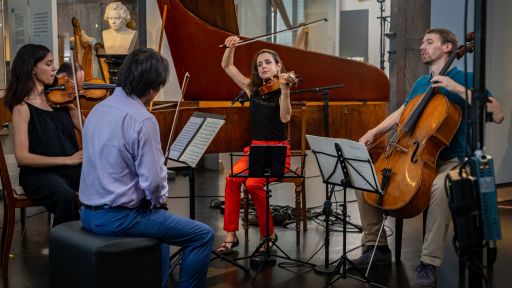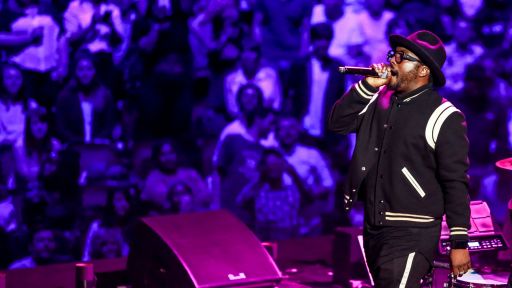Premieres Friday, April 29 at 9 p.m. on PBS (check local listings), pbs.org/nowhearthis and the PBS Video app
Following the traditions of Amy Beach, Florence Price and Aaron Copland, host Scott Yoo explores how American composers are inspired by their immigrant roots today through two composers: Brazilian-born Sergio Assad and Indian American Reena Esmail. To get a sense of the inspirational dance rhythms that Assad grew up with, Yoo meets the composer in Chicago, where Assad performs a lively traditional Brazilian song with his daughter and a band. Assad and Yoo also visit a capoeira studio, where the Brazilian martial art originating from Africa that is “fought” to music by combining elements of dance and acrobatics. In San Francisco, composer Esmail teaches Yoo how Indian scales and rhythms, known as raag and taal, influence her music by demonstrating traditional Indian classical music with violinist Kala Ramnath and percussionist Abhijit Banerjee. They also visit San Francisco’s Asian Art Museum, where Esmail performs her mixture of baroque violin and Indian vocal styles with her husband, violinist Vijay Gupta, surrounded by ancient Indian art.
Places visited: Chicago, Illinois; San Francisco, California
Follow celebrated violinist and conductor Scott Yoo as he travels the United States to uncover the musical influences of some of America’s most prominent composers — Amy Beach, Florence Price and Aaron Copland — in of the third season of Great Performances: Now Hear This. The documentary miniseries also spotlights two contemporary composers weaving the traditional music of their heritage into their compositions: Brazilian-born Sergio Assad and Indian American Reena Esmail. From coast to coast, the series shines a light on the immigrant experience as told through music, featuring local artists across musical genres including gospel, blues and more. Great Performances: Now Hear This Series 3 premieres Fridays, April 8-29 at 9 p.m. ET on PBS (check local listings), pbs.org/nowhearthis and the PBS Video app as part of #PBSForTheArts.
#PBSForTheArts is a multiplatform campaign that celebrates the arts in America. For more than 50 years, PBS has been the media destination for the arts, presenting dance, theater, opera, visual arts and concerts to Americans in every corner of the country. Previous Great Performances programs include Romeo & Juliet from the National Theatre, The Arts Interrupted, Coppelia, From Vienna: The New Year’s Celebration 2022, Reopening: The Broadway Revival and The Conductor premiering Friday, March 25 on PBS. The collection of #PBSForTheArts programs is available at pbs.org/arts and the PBS Video app. Curated conversation and digital shorts are also available on PBS social media platforms using #PBSForTheArts.
Throughout its nearly 50-year history on PBS, Great Performances has provided an unparalleled showcase of the best in all genres of the performing arts, serving as America’s most prestigious and enduring broadcaster of cultural programming. Showcasing a diverse range of artists from around the world, the series has earned 67 Emmy Awards and six Peabody Awards. The Great Performances website hosts exclusive videos, interviews, photos, full episodes and more. The series is produced by The WNET Group.
Great Performances is available for streaming concurrent with broadcast on all station-branded PBS platforms, including PBS.org and the PBS Video App, available on iOS, Android, Roku streaming devices, Apple TV, Android TV, Amazon Fire TV, Samsung Smart TV, Chromecast and VIZIO. PBS station members can view many series, documentaries and specials via PBS Passport. For more information about PBS Passport, visit the PBS Passport FAQ website.
Great Performances: Now Hear This was created by producer, writer and director Harry Lynch and is a production of Arcos Film + Music. Harry Lynch, Scott Yoo and Richard Lim are executive producers. For Great Performances, Bill O’Donnell is series producer and David Horn is executive producer.
Series funding for Great Performances is made possible by The Robert Cornell Memorial Foundation, the Anna-Maria and Stephen Kellen Arts Fund, the LuEsther T. Mertz Charitable Trust, Jody and John Arnhold, The Philip and Janice Levin Foundation, the Kate W. Cassidy Foundation, the Thea Petschek Iervolino Foundation, Rosalind P. Walter, The Starr Foundation, the Seton J. Melvin, the Estate of Worthington Mayo-Smith, and Ellen and James S. Marcus. Funding for Now Hear This is also provided by The Iris and Joseph Pollock Fund, Sue and Edgar Wachenheim III, and the Jack Lawrence Charitable Trust.
Websites: http://pbs.org/nowhearthis, http://facebook.com/GreatPerformances, @GPerfPBS, http://youtube.com/greatperformancespbs, giphy.com/great-performances #NowHearThisOnPBS #PBSForTheArts

